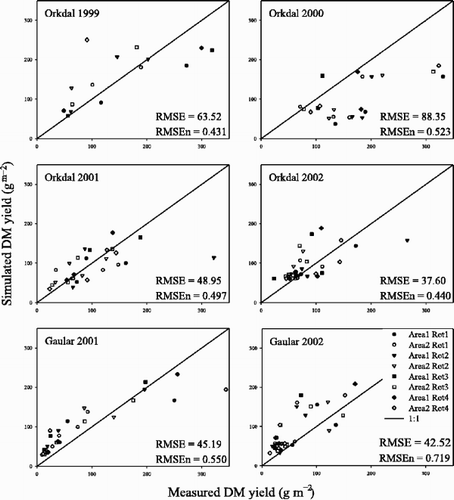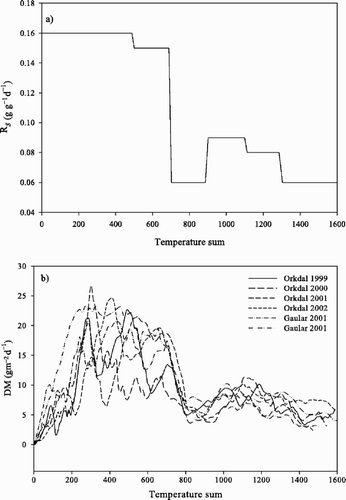Figures & data
Table I. Location, annual precipitation, mean annual temperature, soil type, and readily (RAW) and weakly (WAW) plant available water at four study sites.
Figure 1. Simulated DM yield plotted against measured values for each year at each site (Orkdal and Gaular). The RMSE is the root mean square error of estimation, and RMSEn is the normalised RMSE, calculated as RMSE divided by the mean observation.

Table II. Statistics on the deviation between measured and simulated DM yield of permanent grassland as affected by cover of herbs (H) and grasses (G) in spring. RMSE is the root mean square error of estimation, and Mea-sim is the measured minus the simulated DM yield.
Figure 2. a) Estimated maximum relative growth rate, R s , of abandoned grasslands as related to six temperature sum intervals, and b) DM production for each year at each study site during the growing season as related to temperature sum.
